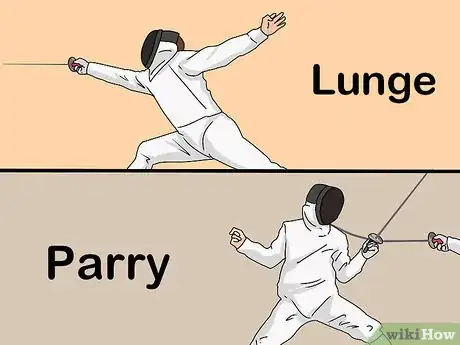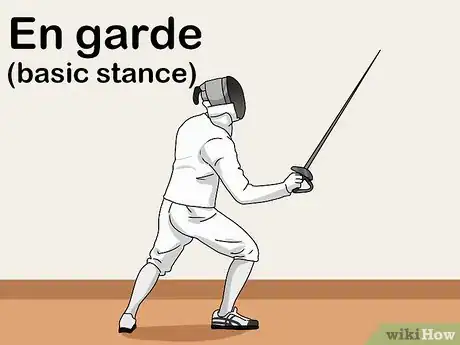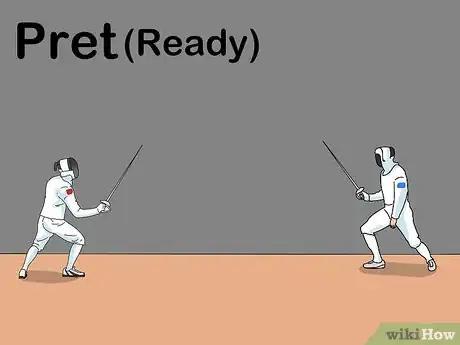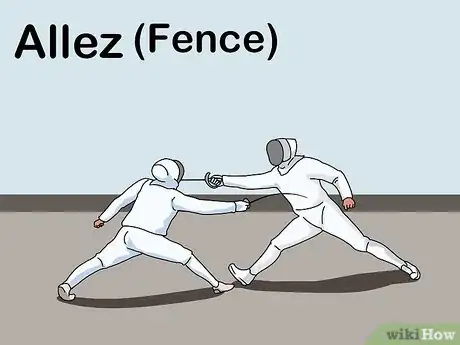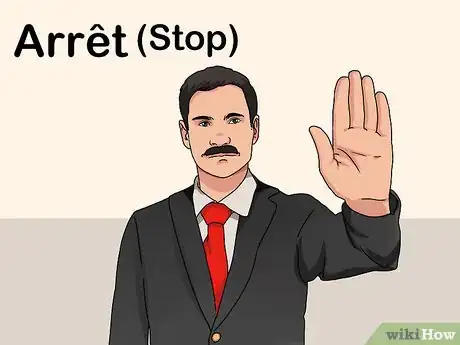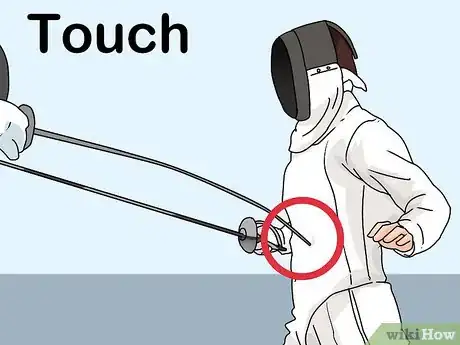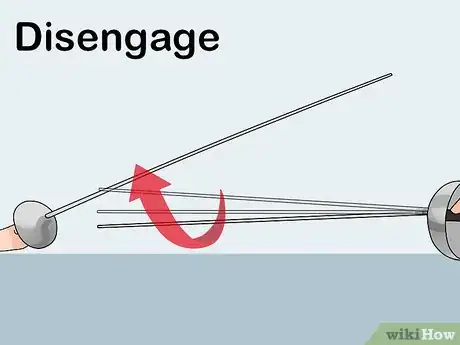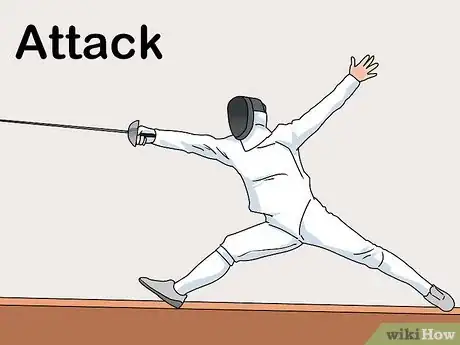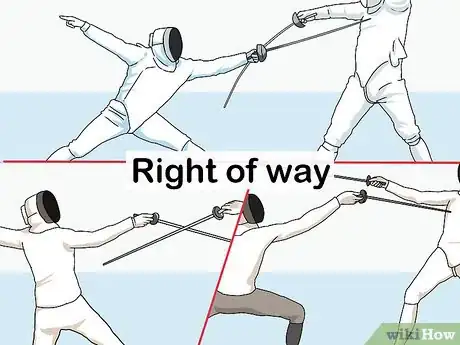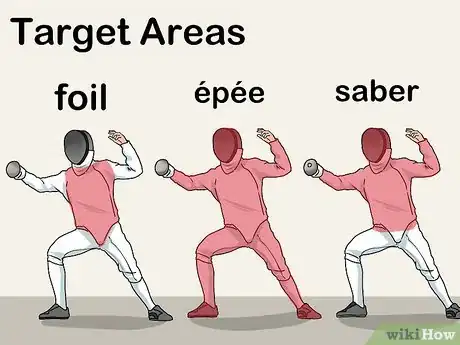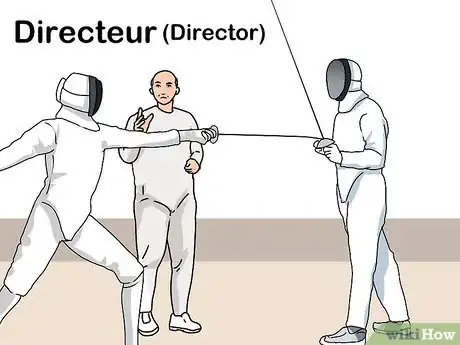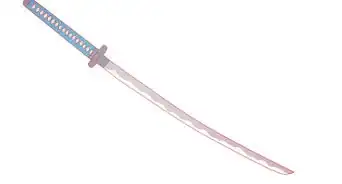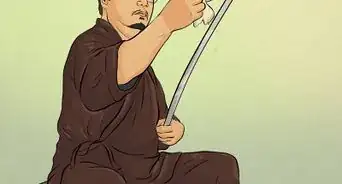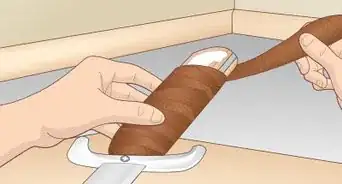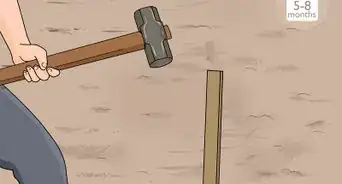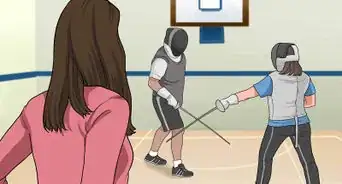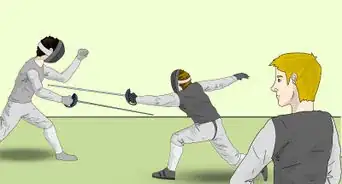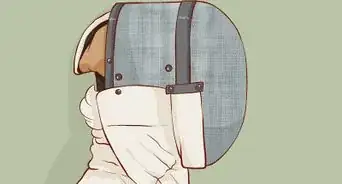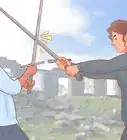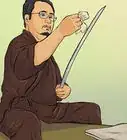wikiHow is a “wiki,” similar to Wikipedia, which means that many of our articles are co-written by multiple authors. To create this article, 24 people, some anonymous, worked to edit and improve it over time.
This article has been viewed 222,912 times.
Learn more...
If you're new to fencing or you're "checking it out" to determine if it is the sport for you (and it is, if challenging yourself physically, mentally and emotionally is an effort you enjoy, along with winning bouts), then you have (or soon will) come across words like "sixte", or "riposte", or "septime". These are words steeped in the history of the sport and are an important part of its magic. But, the good news is they are easy to understand and remember and will add to your ability to either enjoy the sport or pick up a weapon and wail. This wikiHow defines the words; it does not try to explain the techniques that these words describe generically. The actual technique of a "parry" depends on the kind of attack that is being made and would require too much verbiage and is worthy of its own article.
Steps
-
1Familiarize yourself with the following key words and you'll be ready to take on the sport of fencing.
-
2"Lunge" and "Parry": These are the two basic words which you will probably understand immediately. They describe actions that occur countless times in a match at every level:[1]
- "Lunge" is the attack and "parry" is the defense to the attack. You can tell the lunge because the fencer who is lunging has the point of the weapon as far toward the opponent as possible, a back leg that is straight and leaning into the attack by at least 45 degrees and a front leg that is bent to the point where the knee is over the ankle.
- "Parry" is the defender moving her weapon to "push" aside a blade that is attacking. There are a number of different ways to parry and lunge but the basic purpose of each remains the same.
Advertisement -
3"En garde" (French term): In training it describes the basic stance of a fencer. In a match it is a warning from the director to both fencers to prepare to fence.[2]
-
4"Pret" (French term): This is used by a judge at a fencing match. After the judge warns the fencers with "en garde", the judge will then say "pret" to alert the fencers that the match is about to begin. American referees typically use the word "ready" in place of "pret".
-
5"Allez" (French term): This is used by the director at a fencing match to tell the two fencers to have at one another. American referees typically use the word "fence" in place of "allez".[3]
-
6"Arrêt" (French term): Stop. This is used by the director at a fencing match to tell the two fencers to halt.
-
7"Touch": (A much welcome replacement to stabbing, that was developed as fencing became a sport.) A touch is when the tip of one fencers weapon touches the target area on an opponent. Whether the touch results in a point is the determination of the director for the bout, one of whose duties it is to insure the touch was proper under competition rules. The foregoing is true in all styles of fencing. However, in saber fencing, a touch can be scored with the entire blade.[4]
-
8"Riposte" (Another of the ubiquitous French terms (the French love to fence), literally meaning "answer".) In fencing it describes an attack that a fencer makes immediately after she executes a parry. Thus the ubiquitous fencing term "parry-riposte". The parry-riposte is one of the most common techniques in scoring touches you will see in a fencing match, again at any level. The parry-riposte is often done in a sequence of two or three, viz. the fencers quickly switch between attacking, defending, attacking, defending - back and forth until a touch is scored or one of the fencers backs down. At the top level of competition, the speed is dazzling to the point of being faster than the eye.[5]
-
9"Disengage" (not a French term though the French terms are so apt) : A disengage is moving the tip of a blade over or under an opponent's blade to the other side or where the disengage started. This is done very quickly and with the absolute minimum of movement - the "great" fencers simply use their fingers to make the tip of the blade duck around their opponent's weapon. It is used chiefly to escape a parry or as part of a disguised attack, i.e. the attack starts toward the opponent's left side (the opponent is thinking left and prepared to defend the left) and moves to the opponent's right side (so quickly the opponent hasn't time to register the change and react to it with a parry).
-
10"Attack" (we are now safely away from the French): An attack is any movement intended to score a touch.[6]
-
11"Right of way": This is an important concept in foil fencing and in saber fencing, although it does not apply in épée fencing. (It is a very complicated concept but since this wikiHow is just an intro, this is a very basic explanation.) Because of the speed at which foil and sabre fencers move, there had to be some way for a judge to award a point when both fencers have scored a touch almost, if not totally, simultaneously. "Right of way" generally means that the attacker gets the point (aggression pays). In a "parry-riposte", a successful parry ends the opponent's attack and the riposte (being an attack) if successful awards the point to that fencer, even if the fencer who initiated the attack touches the parry-riposter in a legitimate target, too bad - the person executing the successful parry-riposte gets the touch. Basically, a parry transfers the right of way to the person who does it, then following up with a riposte (attack, or touch) scores the point.
-
12Target areas. Depends on the weapon used in the match. In foil ("fleuret" in French) fencing, the target area is defined by a jacket (a lame [lom-MAY]) worn over the torso that appears to be of metallic material; touching anywhere else is "off-target" (a waste, practice point control). In épée fencing, the target area is the entire body of the opponent, including the head and feet. In saber fencing the target area is the entire upper body including the arms, torso, and head, except the hands (which are not covered by the metallic material of the lame). So, in foil a touch is off-target if it doesn't touch the lame and the fencing stops with no point scored. In épée there is no "off-target". In saber, even though there is a target area, no off-target occurs (stopping the action) if a fencer touches an area off-target the fencers keep fencing until a touch is scored.
-
13"Directeur" (or Director): The head judge for any fencing bout. (There may be zero, two, or four "side judges" as well.) When the scoring lights do not make it clear which fencer scored a legitimate touch, the Director analyzes the sequence of actions between the fencers and decides which fencer gets the point, if either.
Community Q&A
-
QuestionWhat is the second thrust called?
 Community AnswerA "redouble" if they did not parry or counterattack. If they parried but did not riposte, it's a "remise" instead.
Community AnswerA "redouble" if they did not parry or counterattack. If they parried but did not riposte, it's a "remise" instead. -
QuestionWhat does yellow, blue, green, and red mean in Olympic fencing?
 Community AnswerThe different colors of the fencing strips in the Olympics is mainly for aesthetics. Beyond helping the fencers who are competing find their correct strip and helping the announcers identify which fencers are on which strips, the colors mean very little.
Community AnswerThe different colors of the fencing strips in the Olympics is mainly for aesthetics. Beyond helping the fencers who are competing find their correct strip and helping the announcers identify which fencers are on which strips, the colors mean very little. -
QuestionWhat is the fencing area called?
 Community AnswerThe field of play on which a bout takes place is called a piste. Generally speaking, it is fourteen meters long by one and one-half meters wide.
Community AnswerThe field of play on which a bout takes place is called a piste. Generally speaking, it is fourteen meters long by one and one-half meters wide.
Warnings
- Do not try to fence without the proper equipment. The F.I.E. and the U.S. Fencing Association, and any legitimate fencing club require proper equipment for all fencing bouts. Don't be blasé about this: accidents do happen and that's why they call them accidents.⧼thumbs_response⧽
References
- ↑ https://www.fencing.net/449/glossary-of-fencing-terms/
- ↑ https://www.myactivesg.com/Sports/Fencing/How-To-Play/Fencing-for-Beginners/Fencing-terminology
- ↑ https://www.myactivesg.com/Sports/Fencing/How-To-Play/Fencing-for-Beginners/Fencing-terminology
- ↑ https://www.fencing.net/449/glossary-of-fencing-terms/
- ↑ https://www.usafencing.org/glossary-of-fencing
- ↑ https://www.usafencing.org/glossary-of-fencing
- FIE
- U.S. Fencing Association
- http://askfred.net/

